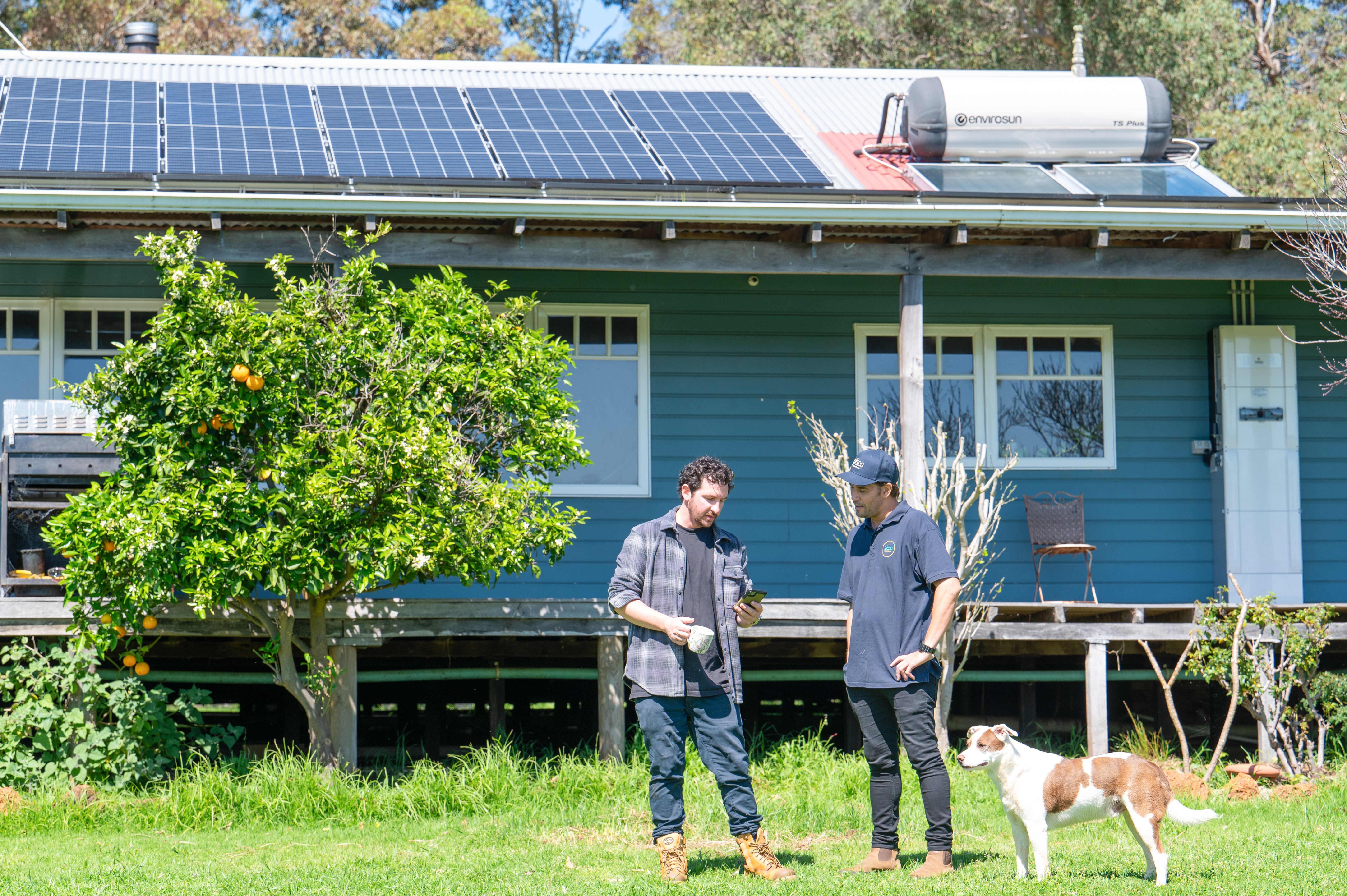You can certainly install solar on a strata building, as long as you have approval from your strata council and network provider. Strata buildings are usually several properties with shared common areas, such as gardens or driveways. They also include apartment buildings and retirement villages. To get solar, your home needs to adhere to bylaws that regulate changes to the property, as well as comply with the connection limits for your strata. The process can be complex depending on your strata arrangement, but the payoff of reducing your energy bills and helping the environment make it all worthwhile.
How does strata work?
Strata works by enabling individual property owners to co-own common areas and share responsibilities for maintenance and decision-making. Strata ownership typically applies to multi-unit complexes, including apartments and townhouses. Strata management is governed by the Strata Titles Act 1985, ensuring clear guidelines for strata schemes. Owners contribute to a strata fund which covers maintenance, insurance, and common area upkeep.
Strata councils, elected by owners, oversee day-to-day operations. Meetings are held to discuss financial matters, maintenance, and improvements. Compliance with bylaws is crucial, covering issues such as noise restrictions, pet policies, and property alterations.
What are the benefits of solar for strata owners?
When you install solar panels on your strata building, you enjoy a number of benefits. From reduced energy bills to an eco-friendly future, solar systems provide peace of mind and add value to your household. Switching to solar also puts less strain on the main electrical grid and reduces the risk of pesky blackouts. Solar providers like Plico even provide cutting edge software so you can monitor your energy usage and system performance.
Solar savings
By harnessing the power of the Australian sun, you can significantly slash your energy costs. Solar panels convert sunlight into electricity, reducing your reliance on the grid during the day and lowering power bills. What's more, surplus energy can be fed back into the grid, earning you credits on your bill through feed-in tariffs. This financial boost further offsets your energy expenses. Plus, with smart management and storage solutions like solar batteries, you maximise savings even more by storing excess energy for nighttime use.
Increased property value
Solar installations not only reduce energy bills but also enhance property attractiveness and value. Western Australian buyers are increasingly drawn to energy-efficient properties with green credentials. Solar panels showcase your commitment to sustainability and act as a compelling selling point.
Solar-equipped strata properties stand out in the market, often fetching higher prices and shorter listing times. Furthermore, solar's positive environmental impact aligns with modern buyers' values, making your property more desirable. Elevate your property's value and appeal with a solar installation that pays dividends in energy savings and property appreciation.
Reduced carbon emissions
Solar energy is clean, renewable, and emits no greenhouse gases, making it an eco-conscious choice. With energy from the sun, strata properties significantly decrease their reliance on fossil fuels for electricity. This reduction in carbon-intensive energy sources contributes to a healthier environment and lowers the property's carbon footprint. Going solar not only slashes energy bills but also demonstrates a commitment to sustainability, aligning with global efforts to combat climate change.
Do I need strata approval for solar panels?
While there are plenty of strata property owners already enjoying the benefits of solar, there are a few things to take into consideration that are unique to strata complexes. The type of strata your property is part of will determine if you need strata approval for solar panels. In most cases, you will. In WA, strata properties are subject to regulations that govern changes to common property, including solar panel installations. Strata approval is essential to ensure compliance with bylaws, uphold safety standards, and maintain the property's overall aesthetic.
The approval process involves submitting your solar panel proposal to the strata council or body corporate. Include comprehensive details such as the proposed location, system specifications, and any necessary technical reports. Engaging with a reputable solar provider can also facilitate the approval process, as they provide professional guidance and documentation.
Strata approval ensures that solar panel installations are harmonious with the property's design and guidelines. While it may seem like an extra step, it guarantees a smooth transition to solar energy while adhering to strata property regulations.
Do I need approval from my network provider for solar panels?
As with all solar installations, you will need approval from your electrical network service provider. Approvals can be rejected based on a number of factors that are unique to strata properties, such as connection limit, existing solar, metering, and shared roof space.
Connection limit
The majority of strata properties in WA have a 30 kVa limit for solar. This means your inverter size and therefore the amount of solar energy you convert at any given time will be restricted to 30 kWh. This is ample energy for complexes with just a few properties. However, if you’re in a complex with five or more dwellings, you’re likely to hit the limit. Keep this in mind when having discussions with your strata council–it might just spark your neighbours into solar action. There may also be a limit imposed at the individual property level. For example, larger strata complexes like retirement villages often have a limit of 2.5 kVa.
In some cases you will need to complete an application to your service provider to find out what your connection limit is. If it’s 30 kVa and prohibiting you from installing solar, you may look at applying for a supply capacity upgrade. This application requires approval from your strata council and all property owners to proceed. It can be an arduous and costly process, however, it’s not impossible if you have your heart set on accessing the benefits of solar.
Existing solar
If there is an existing solar PV array on one or more of the buildings in your strata property, then your ability to add more panels or receive the feed-in tariffs for solar exports may be affected, especially if your strata has a 30 kVa connection limit. It’s a first come, first served arrangement for strata properties. If you are the first, you will get all the benefits and less restrictions on your system.
Any limitations caused by existing solar can be discussed with your qualified solar provider and will be considered when you reach the approvals stage. If your ability to earn revenue from solar exports looks like it might be affected, you could consider adding a battery to your system to make the most of any excess solar energy you produce.
Metering
Depending on whether you have your own meter, or your strata buildings share a meter will impact how easy the process is to get solar. If you’re connected to your own meter, the process is more straightforward, as you won’t be sharing solar production exports with your strata neighbours. If you have a shared meter and live next to like-minded solar advocates, you may wish to join forces and install a solar system that you all benefit from. Obviously, any shared arrangements are a little more complicated and require some oversight by your strata council.
Shared roof space
If you share a roof with your neighbour, it can add another layer of complexity to the process. You will need permission to have panels installed on your neighbour’s roof and you may be liable for any damages–and that’s only if they agree to having panels on their roof that they won’t get the benefits from. A qualified solar provider can assess your roof space and provide a virtual layout of solar panels so you can see exactly how they will be positioned.
How do I install solar on a strata property?
Once solar has been approved for your strata property, the installation process starts. The process may differ depending on whether you're getting solar for your property, or all properties in the strata. However, Plico is here to help every step of the way.
Assessing your property
Reliable installation begins with a site visit. Your solar provider, Plico, may conduct a no-obligation site visit to assess the best solar solution for your property. We’re also pretty handy when it comes to bureaucratic red tape. We deal with solar panel installation paperwork for a living, and help make the process as stress-free as possible.
Installing solar
Installing solar could take as little as a day. During the process, we’ll need to turn the power off for a short period, but we’ll let you know in advance. If you’re around to see the installation, our specialists will also demonstrate how to use Plico’s phone application and run through what’s connected to your backup circuit.
Performance and monitoring
Once your solar system is up and running, you can keep an eye on its performance and change your habits to use more energy when the sun is shining. If you’re in an area prone to corrosion, keeping solar panels clean is advisable. This way, your panels operate at optimum efficiency and you get to reap the benefits of solar energy.
Plico members get 10 years of support from our experts, which includes cloud-based monitoring. With the right care, your solar panels could last up to 25 years.
Can I install a solar battery on my strata property?
You can install a solar battery on your strata property if you include the request in your initial application. Most of the studies associated with strata properties and solar relate to the solar panels and the amount of solar energy that can be produced. If your intention is to include a battery with your solar installation (which we highly recommend you do), you’ll need to include this with all your applications. For most applications, the addition of a battery will not affect your approvals because this simply allows you to store your generated energy and use it at nighttime or when it’s cloudy. If you live in an apartment or have limited external walls, you’ll need to consider the location of your solar battery to ensure you have the safest and most effective position.
Is solar the right choice for my strata property?
Solar power is the right choice for your strata property if you value energy independence, lower electricity bills, and the environment. Although the process can be a bit lengthy, the rewards are more than worth it.
When dealing with a solar provider like Plico, you can rest assured that your solar journey is in the right hands. We’ll talk you through the options and get the best system for your property.
Chat to one of our switched on team members for more information about installing solar on your strata property.


